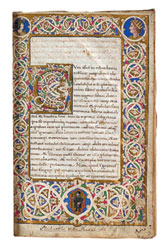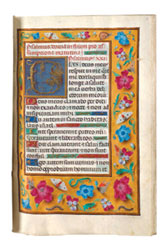   |
|
|
|
|
|
|
 |
Pagine di codici miniati
nel sec. XII |
 |
|
|
…With lithography, reproduction technique of the piece
of art work reaches a considerably newer level. The process,
much more effective compared to engraving of the picture
onto a block of wood or into a copper plate, consists of its
transposition onto a stone plate and, for the very first
time, gave to graphics the possibility of not just
introducing its own products onto the market, but also doing
so while giving them shapes and forms that were forever
changing. By means of the lithography, graphics was able to
see itself as being able to accompany that day-to-day
dimension, in an illustrating way.
[…] Making things, spatially and humanly, closer to each
other, is an urgent and real need of the masses of today,
just as is the trend to overcome the unique quality of any
given piece of data, by way of reception of its
reproduction.
|
|
 |
Pagine di un volume litografato nel
sec. XXI |
…just
as in primitive times, by means of the absolute weight of
its cultural worth, the artwork had become an instrument of
the magic which, in some way, was only later recognised as
work of art, today, through the absolute weight that is
assumed by its exhibition value, the work of art becomes an
aggregate having completely new functions, among which that
we are aware of – that is the artistic function – outlines
itself to be the one which in the future will be able to be
recognised and defined marginal.
WALTER
BENJAMIN,
The Work
of Art in the Age of Mechanical Reproduction
|
|
 |
|